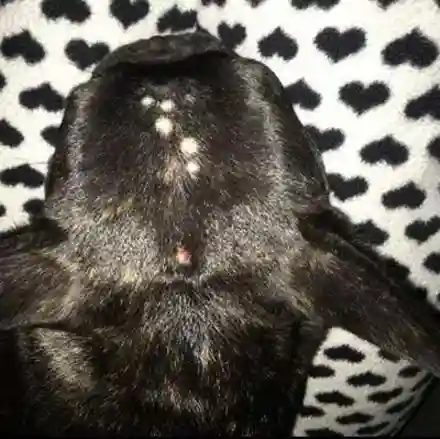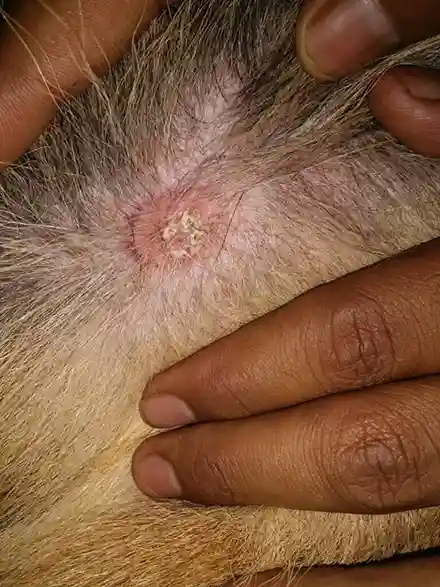What is Ringworm?
Ringworm, despite its name, is not caused by worms or bacteria. It is a contagious fungal infection that affects your dog's skin, hair, scalp or nails. The medical term for ringworm is dermatophytosis. The name "ringworm" comes from the characteristic red, raised, and often ring-shaped rash that can develop.
The fungi responsible for ringworm belong to the dermatophyte group, and they thrive on dead tissues, such as the outer layers of skin and nails. Ringworm on dogs may present itself as circular, red, and scaly lesions. Hair loss is also a common symptom, and the affected areas may appear crusty or inflamed. Dogs can contract ringworm through cross-species transmission, contaminated objects, or environments where the fungus is present. This is what ringworm on dogs looks like:




Canine Species:
Microsporum canis:
This is the most common fungus that causes ringworm in dogs. It can also infect other animals and humans.
Microsporum gypseum:
This fungus is often found in soil and can infect both animals and humans.
Trichophyton mentagrophytes:
This type of ringworm can affect various animals, including dogs and cats, as well as humans.


